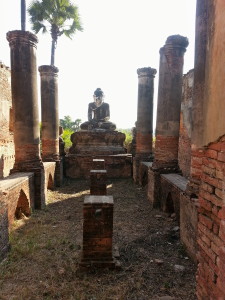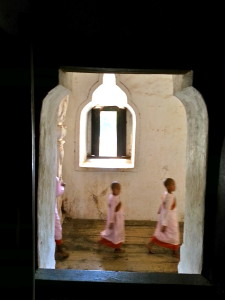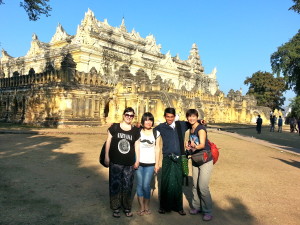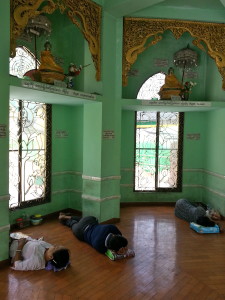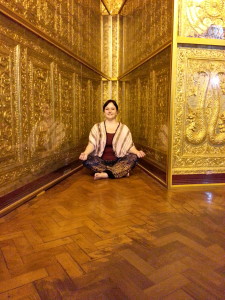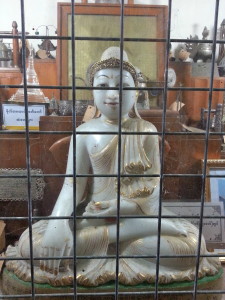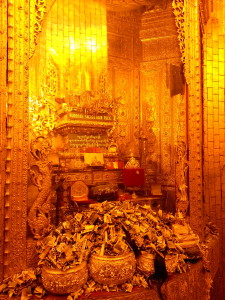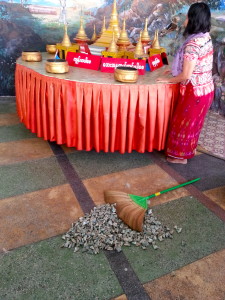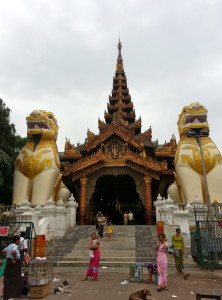The central city of Bagan, Burma (formerly Myanmar), about an hour southwest of Mandalay by plane, is known as the land of 2,000 temples. The locals however argue there are closer to 4,000 and even if you lived there it would be hard to visit every single one. People travel to Bagan to watch a sunrise or sunset from the tops of the many ancient pagodas. Many temples and pagodas have steps you can climb, although the Burmese government recently banned tourists from doing this as of March 1st, 2016 (read more on the ban here). Luckily I got there in January and managed to catch a sunrise from one of the smaller, lesser-known pagodas.
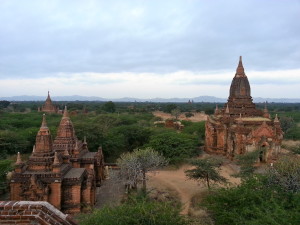
Waiting for the sun.





To get around to the many temples and pagodas most travellers rent a regular bike, an e-bike (a bicycle with an electric motor) or a moped (like a slower, battery operated motorcycle with no license required). Mopeds were the most preferred since the side roads needed to get to said temples and pagodas are often sandy and uneven which makes adventuring with a bicycle difficult. Moped daily rentals cost between 5,000-8,000 kyats (approx. $5.50-$8.80 CAD) depending on the size of the bike. Most rental places expect the bikes back by 8pm or whenever it gets dark out so it’s a fair deal for a whole day of exploring.
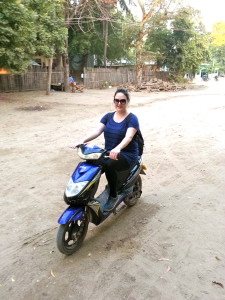
My first moped rental. A little scary!
What often happens when heading out to find the big famous temples is you get side-tracked by some random and often unmarked pagoda or temple that looks interesting. So off you go down a sandy path towards the temple that caught your eye and the next thing you know it’s been an hour, you’ve found nothing on the map but you’ve explored about a mile of ancient roads. This is why they say you need at least 3 days to look around. You need time to wander. Below are some pictures of the ancient unnamed pagodas I stumbled upon.








Eventually I did find my way to some of the more well-known temples but with great fame comes a great many patrons and tourists. Here are some shots of the bigger temples. The huge white temple below is called Ananda Temple.





Htilominlo Temple was one of my favourites because of the markets at the entrance to the temple. It was busy and pretty much a tourist trap but I enjoyed the bustling atmosphere amongst the devout.

The walkway to Htilominlo.

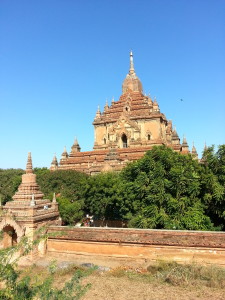
Htilominlo seen from the top of a neighboring pagoda.
Thatbyinnyu Temple was another I liked, partly because I found it by accident. Many of these temples are the same inside with big buddha statues, cool stucco walls and old cement floors. Often times the architecture from the outside is the best part and the insides are more plain.



For those who don’t want to bike around to the temples and would rather the safety of a car, it is possible to rent a driver and a car for a day. The cost is around $60 USD so share the fare with 3 people and it’s not so bad. Keep in mind that the drivers rarely own their own cars. Drivers usually get $2-$4 USD for an 8 hour day while the car owner keeps the remaining money. If you do rent a driver be sure to tip them well!
I will leave you with some sunset pictures to end our journey through Bagan. No matter how limited your time in Burma may be, I highly recommend you include Bagan in your itinerary. Until next time Dear Readers, be well.
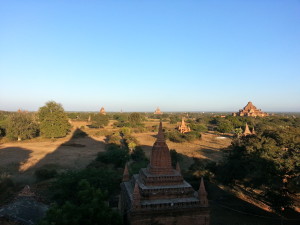
Sunset from a temple-top.














